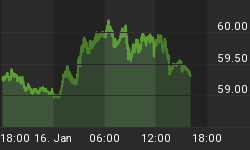by James Hyerczyk
Global equity markets fell sharply lower overnight on renewed fears in the Euro Zone and rising tensions between North Korea and South Korea. The sell-off started early when Asian traders began liquidating equities on war concerns between the Korean nations and quickly spread to Europe and the U.S. as these two regions continued to struggle with the spreading debt issues in the Euro Zone.
Comments from the International Monetary Fund helped accelerate the decline in European markets. On Monday, the IMF warned that Spain must do more to accelerate the consolidation of its banking system and to overhaul its labor laws and government pension systems. Despite remaining upbeat about the soundness of Spain's banking system, traders read this comment as a negative and began selling equities while seeking shelter in lower yielding currencies.
On Monday, the June E-mini S&P 500 tried, but failed to confirm Friday's closing price reversal bottom. This failure helped set up the overnight decline because it indicated that buyers were scarce. After trading lower on Monday's opening, the E-mini started to rally, buoyed by the news of a better than expected U.S. Existing Home Sales Report.
By the mid-session the S&P 500 was flirting with turning positive, but buying dried up as the market neared Friday's high at 1088.75. At the close, Friday's closing price reversal bottom had not been confirmed, leading to speculation that there may be a correction back to at least 1060.00. The overnight weakness more than accommodated the bears by driving through this price level to a low of 1036.75.
The June E-mini S&P 500 is now set to challenge the low for the year at 1036.25. A trade through this price will wipe out the entire February to May rally and indicate further weakness is likely. Stops are expected to be triggered under this level, however, there is always the possibility of a short-covering rally especially since sentiment is extremely bearish and technical indicators remain oversold.
June Gold finished higher after high volatility and overbought conditions drove large speculators to take profits last week. For several weeks, gold traders had been buying the metal as a hedge against the possible collapse in the Euro, but the recent slowdown in the fall in the Euro has given speculators an opportunity to take a little bit off the table.
Monday's renewed weakness in the Euro and concerns about contagion in the Euro Zone because of the government takeover of a Spanish financial institution helped to drive up gold.
June Gold is trading slightly lower in limited trading. Speculators have not been too aggressive in this market overnight. Financial turmoil usually drives gold higher, but in this case, margin calls from the equity market sell-off may be the reason why gains have been limited.
Technically, June Gold is still in an uptrend as long as the last swing bottom at $1156.20 holds as support. Last week this market corrected into a 50% price at $1167.90 and an uptrending Gann angle at $1168.10. On Tuesday, the Gann angle moves up to $1172.10.
Based on the developing short-term range of $1249.70 to $1166.00, traders should look for a minimum near-term correction back to $1207.80 to $1217.70. The test of this area should dictate the further direction of gold. A failure in this zone will indicate a possible secondary lower-top formation.
The global sell-off in the equity markets is driving up demand for June Treasury Bonds overnight. T-Bonds finished lower on Monday as the see-saw trading in the equity markets encouraged traders to liquidate flight-to-safety trades put on last week when stocks plunged and T-Bonds soared to a new high for the year at 126'01.
Traders have been ignoring the abundance of supply in the markets and instead have been focusing on the likelihood the Fed will leave interest rates near zero until next year and the on-going concerns in the Euro Zone economy.
Watch the U.S. equity markets for clues as to which way the T-Bonds will move. Panic selling in the stock market is likely to drive investors into the safety of the Treasury instruments.
September Crude Oil straddled the February bottom at 72.43 on Monday. Additional support was being provided by a 50% price at 72.16. The overnight break under this level triggered a sharp decline overnight.
















